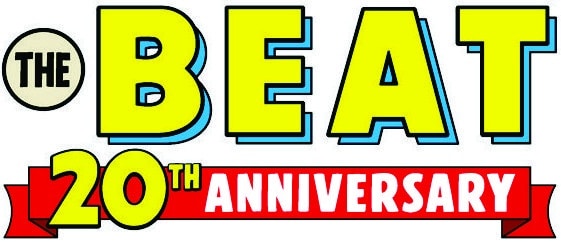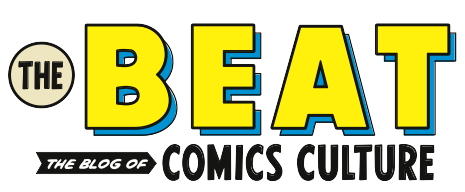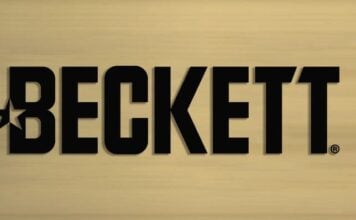Tag: Sales Charts
DC Comics Month-to-Month Sales: October 2011
October was a first litmus test for the good "New 52" relaunch numbers, as it was the first month that allowed retailers to react to customer feedback on DC's "New 52" initiative in a meaningful way.
As a result, Marvel won a little less of the market share than usual got really spanked by DC in October, which took the Top 6 spots, along with a whopping 17 out of the Top 20 (and 32 out of the Top 50, and 60 out of the Top 100), as well as 50.97 percent of the unit market share and 42.47 percent of the dollar share.
DC's average periodical numbers were down a bit from September and are now in the exact same area as right after the line-wide "One Year Later" event in May 2006, which had been DC's high-water mark before the current relaunch. Back then, the average new DC comic book (not counting the now-defunct WildStorm) sold an estimated 50,519 units, the average new DC Universe comic book 59,505. In October 2011, now, it's 51,280 and 59,146, respectively. These numbers don't suggest we need to build a new ball park quite yet, but DC certainly did a great job of filling up the old one in a way that hasn't happened since, well, 2006.
While a slight drop-off from September was to be expected, it turns out to be very slight indeed, because 16 of the "New 52" titles didn't drop at all, but rather increased in sales. They're led by Animal Man, which, on the back of good reviews, saw an impressive second-issue increase of 16 percent. And even most of the rest of the bunch displays much slighter drops than we're used to, for that matter. Only 16 of the percentage drops are in the double digits, and only four of those -- Action Comics, Men of War, Superman and Blackhawks -- are in the area you'd usually suspect. As a result, the average second-issue drop for the "New 52" is a tiny 5.2 percent -- a dream figure by any standard.
(Also, it's worth noting that many of the books with the bigger second-issue drops came out in the last week of October. Technically, this means that they were disadvantaged, because all subsequent re-orders slipped into November. On the other hand, the first issues of those titles shipped in the last week of September, too, of course, so it should have evened out. In any case, we'll get a clearer picture of what's going on with the November chart.)
New Wimpy Kid sells 1 million in first week
The Wimpy Kid is the new Twilight. The latest book in the series, Cabin Fever, sold over one million hardcovers in its first week on sale. Sales were 25% higher than last year's November release, The Ugly Truth.
RE: the recent sales figure discussions -- with numbers this good, there's no reason not to trumpet them aloud.
Marvel Month-to-Month sales: October 2011
Welcome to month two of Bizarro World! This was quite a busy month for Marvel, with the "Fear Itself" crossover continuing, the relaunch of INCREDIBLE HULK, and the first issue of new title WOLVERINE & THE X-MEN.
But once again, the big story in October was the continued success of the DCU relaunch. DC's lead over Marvel in September may have been narrow, but in October it was massive. Helped by hefty re-orders on virtually the entire September DCU line, DC led Marvel by 42% to 29% in dollars and a remarkable 51% to 30% in units. That market share is partly due to massive reorders on DC's September line. It seems reasonable to assume that this won't be a regular event, and that the gap won't be quite so large in future. But the possibility that Marvel might have to readjust to life as the number two publisher cannot be ruled out.
Not that it's doom and gloom by any means. DC's sales are up, but not at Marvel's expense. If the DC relaunch has brought new readers into stores, or old readers back, then in theory Marvel should be able to take advantage of that too. On the other hand, it also makes it rather harder for Marvel to argue that its books are losing sales because it's a tough market. DC has just proved that declining sales are not inevitable.
Thanks as always to ICV2.com for permission to use these figures.
Brandon: Sales charts are the devil's work
Writer Ivan Brandon gives voice to the frequently-stated among creators idea that sales charts are a dangerous thing for the business, and may actually help put people out of work. He was most upset by the recent iFanboy piece that looked at all the Marvel books that seemed to be below the line that spelled cancellation:
Indie Month-to-Month Sales: September 2011
Buffy returns in the top spot, although with sales far down on the beginning of the last Season, with Angel in third place. Sandwiched in between is Game of Thrones' debut issue, while TMNT drops to fourth place after being last month's best-selling indie. Further down the charts IDW's other new licensed ongoing titles seem to be benefiting from the increased awareness the new DC books seem to be bringing, while many of Dynamite's licenses seem to be tanking, the aforementioned Game of Thrones apart.
There were 127 indie books in the chart this month, well up on last month's 103. The 103 book this month sold almost exactly what the 103 book last month sold, so this was certainly due to less Marvel and DC books released this month rather than stronger Indie sales. In fact those 103 books sold almost 35,000 less copies than last month, although top 300 indie sales are 1,053,116, almost 55,000 up on August. The bottom book sold 3,341 compared to last month's 4,514. As usual, UK and European sales from Diamond UK are not reported in this chart.
This month Dark Horse were the number three publisher, with 4.76% dollar share and a 3.51 market share, followed by IDW with 4.13% dollar share and 3.10% market share, Image with a 4.08% dollar share and a 3.29% market share, Dynamite with a 3.07% dollar share and a 3.02% market share, and Boom with 1.39% dollar and 0.94% market share. That's the same order as last month, although all but Dynamite have reduced figures.
DC Comics Month-to-Month Sales: September 2011
September was business as usual for DC Comics' periodical sales, as... oh, wait.
The "New 52" project, a relaunch of its complete superhero line via 52 #1 issues, made September 2011 a record-breaking month for DC Comics -- and a joyously eventful one for the people watching their sales. It's not often that publishers attempt something on this scale, unfortunately, so it's nice not to come up with 52 different ways of expressing that sales have mostly been going down, for a change. It's a little bit like that myth about Eskimos and the words they have for snow.
Anyway: The average DC comic book sold an estimated 57,224 units in September, the average DC Universe comic book a whopping 67,411 units. That's more than double what it was in August for both, as well as more than in any previous month since sole distributor Diamond started releasing information on actual sales to specialty retailers in March 2003. The month that comes closest is May 2006, when DC's line-wide "One Year Later" initiative kicked off, with 44,554 (DC total) and 59,505 (DC Universe) units, respectively.
And, while we're breaking records: May 2006 was also the only previous time when the total dollar value of DC's periodical comic books exceeded 10 million, with an estimated $10,157,965. In September 2011, the amount was $10.9 million for DC total and $10.5 million for the DC Universe line, which never broke the 10-million mark on its own before. (Average cover prices were about the same, by the way: $3.05 for DC total and $3.04 for DC Universe in 2006, and vice versa in 2011.)
Marvel Month-to-Month Sales: September 2011
By Paul O'Brien -- It's the column you've been waiting for! The September sales - for Marvel!
Hello? Hello? Is this thing on?
Okay, so September was DC's month. And understandably, most publishers got out of the way, rather than trying to launch any new titles against the New 52 onslaught. Marvel had the second month of the Ultimate relaunch, and there are a couple of new Icon books in the form of BRILLIANT and the returning CASANOVA, but that's really about it where new launches are concerned. Of course, there's also the continuing crossovers of "Fear Itself", "Spider-Island" and "Schism", and Marvel's standard practice these days would be to launch the new books after those events, not during.
For the first time in quite a while, DC had the biggest share of the market, leading Marvel by 43% to 38% in units, and a razor-thin 36% to 35% in dollars. (Incidentally, those market share figures apparently don't apply the retainability discount which Diamond factored into the sales of individual issues.) If that seems closer than you expected, bear in mind that with 52 superhero comics, DC were actually cutting their line back. Marvel solicited almost 80 Marvel Universe superhero books for the same month - though that may not last, given that lower selling titles are now apparently being culled.
DC's decisive October win lifted a lot of boats
The month's startling sales chars are analyzed at ICv2 with a look at the overall growth for the year. With so many relists on the charts, a number of books from other publishers were squeezed off. However the #300 book -- Robert E Howards Savage Sword #3 -- sold 5,167, according to the ICv2 metric. Last month, the #300 book -- Stan Lee Starborn #10 -- charts with 3,341 copies sold. So that's exactly how much the rising tide lifted that boat.
October comics set many sales records
John Jackson Miller has posted his estimates for October 2011 sales ( ICv2's will be out tomorrow) and it was a month of records:
DC wallops Marvel 51% to 30% in October
Looks like that risky relaunch really paid off, as DC had 51% of the comics unit share in October, according to just released Diamond figures. That was a whopping 21 points over Marvel. DC led 42% to 30% in dollars. Justice League #2 topped the comics chart, joined by Green Lantern, Batman, Detective Action, Superman and the Flash in the top 10. Marvel's top seller was Incredible Hulk #1.
DC Comics Month-to-Month Sales: August 2011
As you may have heard, DC had this relaunch thing going on in September, ending several months of deck-clearing and water-treading in the company's superhero line. The kick-off came in the last week of August, with the release of Geoff Johns and Jim Lee's Justice League #1, which -- to nobody's surprise -- leads the August charts by quite a margin. To gauge what this means in the broader context of the comic-book direct market, though, we'll have to go back a few years.
September: DC wins, but GNs weak
ICv2 has its September estimate up but nothing is normal as returnable books were penalized 10%. DC's cheaper cover price meant that their dollar share was up only a bit over Marvel, but units sold convincingly better. However the big underreported story for September is the dip in GN sales. Is it just the SCOTT PILGRIM effect?







